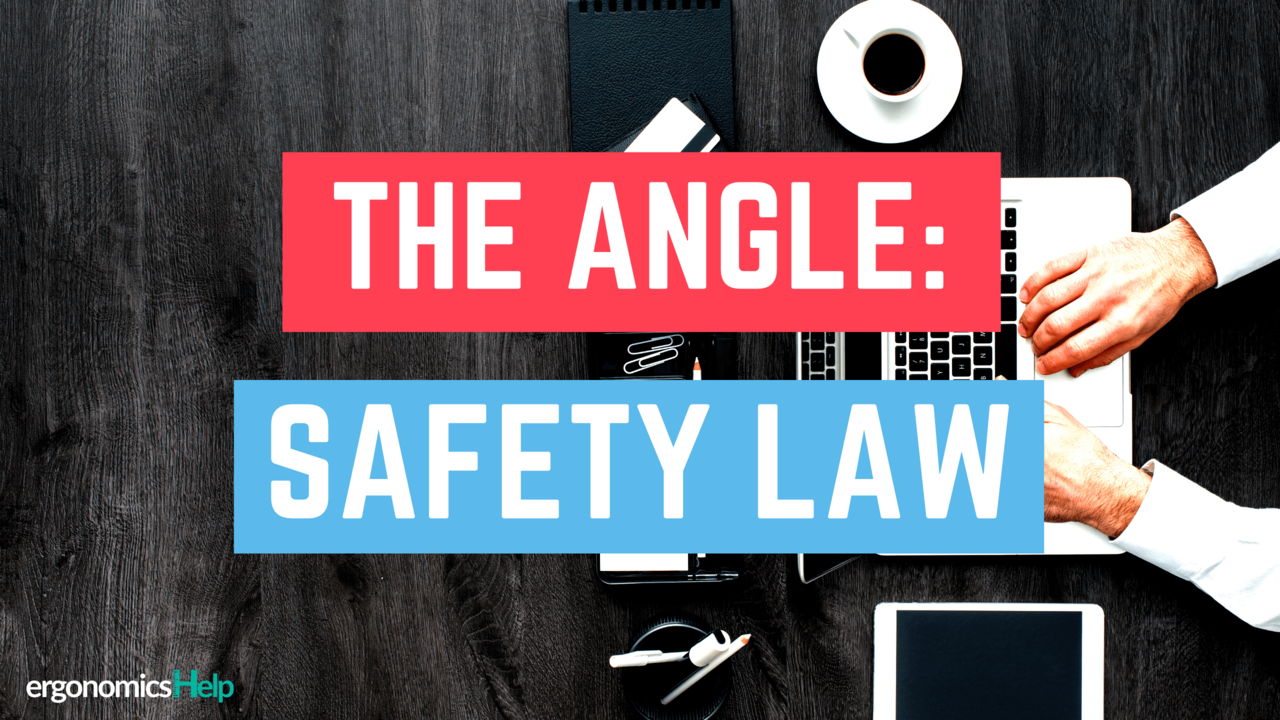The Angle: SAFETY LAW
Dec 12, 2019
One of the biggest things that I've learned in my career thus far is that knowing how to do really ergonomics assessments, consultations, and trainings is really just the tip of the iceberg when it comes to preventing injuries and enhancing performance for your clients.
Whether you are self-employed or work within a large organization, in order to be fully booked it's essential to know how to communicate the VALUE of your services to both prospects and clients alike.
I know how hard this can be - I've done both. The good news there's certainly a way that you can learn how to do this!
Ergonomics professionals have really useful methods to help clients in a variety of ways - including health, safety, productivity, morale, etc. However, effectively communicating this in a manner that strikes a cord with your clients is the key. So let's dive into an angle to help you communicate your deliverables.
The Angle: SAFETY LAW
No matter where you are in this world, Occupational Safety Law will apply to ergonomics and although it may not be directly identified in legislation, employers still do have a legal obligation to protect all of their employers from any workplace hazard.
Things as simple as making sure that equipment is functional. Non-compliance may eventually lead to bigger concerns (aka injury and citation), that may take a lot of time to rehab or could mean a lot of lost profit for the organization.
Lastly, employers also have a duty to provide information, instruction and supervision for health and safety, in addition to an obligation to communicate hazards to employees, and lastly to take every precaution reasonable in the circumstances to protect workers.
Wow! Does that change HOW you would position your deliverables to your clients and prospects? By looking at the entire picture like this you can position your services so that they're aligned with what your prospects are already required to do.
Here's a question for you...
- How many organizations that you've either prospected or worked with actually make this 'Safety Angle' a priority? (if so, would they be your ideal customers??)
- If you've noticed that there are areas for improvement in an organization, how do you go about communicating this to your client so it inspires action?
- How do you go about finding areas of improvement?
- How do you sell your services to your clients that it 'fill the gaps' between where they are and where they want to be? This is very much a win-win situation.
Human Resources' Responsibilities
Let's face it. For the majority of times you communicate with your client it will be via a representative of the HR department. There's a bit of distinction here, your point of contact who you build rapport with may not necessarily be the decision-maker (the person who can say 'yes' to your deliverables), yet framing ergonomics in a way that your HR contact understands is always a good thing.
I've included a list of what HR would be responsible for. It's by no means a conclusive list, but it represents the majority of their responsibilities. HR will always have a role in ergonomics because of their responsibilities, listed below.
One of the biggest areas that you can leverage is that HR is responsible for company compliance with State and Federal regulations - and this includes Labour Law.
Wow! I know that many of my readers are already aware of this, but bringing this up again really couldn't hurt.
Here's a few of HR's responsibilities:
- Professional Development
- Appraisals
- Maintaining Work Culture
- Resolving Conflicts
- Employee Relations
- Rewards & Incentives
- Legal Knowledge
- Disability Management
- Policies & Procedures
Actionable Steps
Start to build a relationship with local HR. Remember that they fulfil of the organization's legal responsibilities but they are also people. So, they must know, like, and trust you before they can ever move forward with you.
